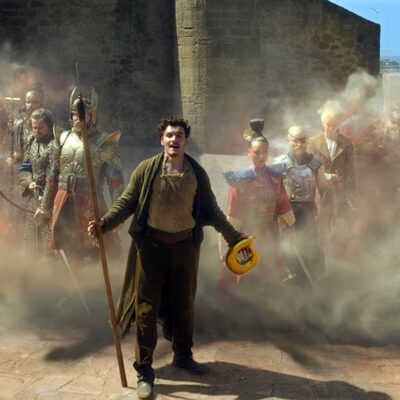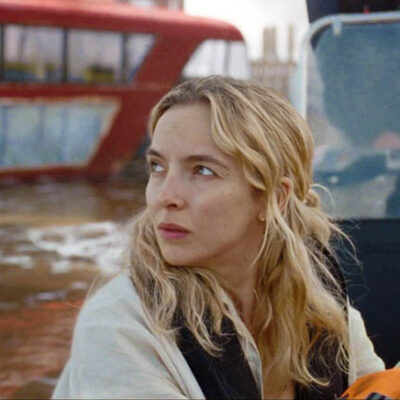VFX Voice: Iron Man is wearing his new nano-particle suit in this battle. What effects challenges were involved here?
Aitken: The way the fight proceeds is that, initially, Iron Man is trying out all these different weapons; we built 12 different weapons. We got concept art for about four of them, and so we used that as a guide and worked up the other eight or so ourselves. We could have done concept art for those, but we actually just worked them up as geometry and got them approved as geometric turntables.
Part of the way those weapons form is that the nano-particles are moving around on the suit, and at some point Thanos is getting the upper hand over Tony. One of the ways he’s achieving that is by punching chunks of the nano-tech off the suit. He’ll smash Iron Man’s helmet, and large chunks of the helmet will fly away. Once they get beyond a certain distance from the suit, they can’t make it back, so the volume of nano material that Iron Man has to work with gets gradually reduced.
VFX Voice: How was the Thanos and Iron Man fight filmed?
Aitken: Robert Downey Jr. did that on stage, either with Josh Brolin as Thanos or with a stuntie standing in for Josh. They wore a cardboard shoulder strap version of Thanos’ bust of the shoulders and head, so that there was an eyeline match that could be referred to. Essentially, Robert just wore the suit that he wears under the Iron Man suit, but we ended up invariably roto’ing his head off and replacing everything else, which was easier than it sounds, because we were replacing the environment anyway.
VFX Voice: Spider-Man is in the battle, too, with a new suit. What were the visual effects components here?
Aitken: He’s got the ‘Iron Spider’ suit, which has similar technology to Iron Man’s bleeding-edge nano-tech suit, so it had some similarities in the look, but it had to be a distinctive Spider-Man suit as well. He’s got the hood on, but he’s still often talking. We made the eyes in the suit a little bit like the blades in a camera iris. We built eye blend-shape targets for the eye expressions, but then our facial rigging team essentially wrapped cloth over his face and went through all the different phonemes and all the different blend-shape targets and created a cloth-wrapped version of all those shapes. Then those became the facial-animation rig for the hood, and so it meant that as far as the animators were concerned, they had exactly the same controls to animate the rest of Spidey’s face as they would have for the whole of Spidey’s face.









 Read more about the visual effects of Avengers: Infinity War
Read more about the visual effects of Avengers: Infinity War 




